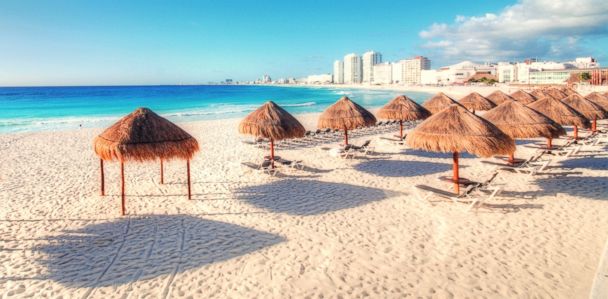
Conversely, television schedules are not changed for these situations, meaning Mexican television networks which are carried directly by American cable and satellite services have their programming aired an hour behind in the United States during these interregnums. The Mexican Stock Exchange changes its hours during these periods in order to maintain synchronization with the U.S. During these periods, clocks in Mexico City match those in Denver rather than those in Chicago. The second is the single week between the last Sunday in October and the first Sunday in November. The first is the three or four weeks between the second Sunday in March and the first Sunday in April. Quintana Roo and Sonora do not observe DST.Īs the United States starts DST on the second Sunday in March and ends it on the first Sunday in November, Mexico's time zones are out of synchronization with American and Canadian time zones for two periods each year. on the first Sunday in April through 2 a.m. But in the rest of the country, daylight saving time is observed between 2 a.m. For municipalities located less than 20 km from the US border, such as Ciudad Juárez, and the entire state of Baja California, it coincides with the longer extended daylight saving period adopted for 2007 in the United States. These states abandoned DST the following year and did not return to it until DST was adopted nationwide.ĭaylight saving time has been observed nationwide in Mexico since 1996. In addition to that, the states of Durango, Coahuila, Nuevo León and Tamaulipas unofficially observed DST in 1988 as an experiment, starting on the first Sunday in April and ending on the last Sunday in October. Until 1996, Baja California was the only Mexican state to officially observe DST every year, coinciding with the observance of DST across the border in San Diego, California. It used the "Hora del Centro" from April 1 to September 30, and the "Hora del Oeste" the rest of the year. The first observation of DST was in 1931, but only for the state of Baja California. Main article: Daylight saving time in Mexico The three states returned one year later to the Hora del Centro (90° W, UTC−06:00) Quintana Roo, however, returned to the Hora del Sureste (75° W, UTC−05:00) from October 1997 to August 1998 and then again in February 2015. The time zone Hora del Sureste (75° W, UTC−05:00) was created for tourist reasons in 1981, originally covering the states of Campeche, Yucatán, and Quintana Roo. It was decreed in 1942 that the Hora del Noroeste (105° W, UTC−07:00) should cover only the states of Baja California Sur, Sonora, Sinaloa, and Nayarit while the Hora del Centro (90° W, UTC−06:00) was used for the rest of the country. In 1930 three zones were decreed: Hora del Oeste (120° W, UTC−08:00) for the state of Baja California (norte) Hora del Golfo (90° W, UTC−06:00) covering the states of Tamaulipas, Veracruz, Oaxaca, Tabasco, Chiapas, Campeche, Yucatán and Quintana Roo and Hora del Centro (105° W, UTC−07:00) for the rest of the country. A second time zone designated for 105° W (7 hours behind GMT) covered the rest of the country, from Baja California to Veracruz and Oaxaca. One time zone designated for 90° W (6 hours behind GMT) covered the states of Tabasco, Chiapas, Campeche, Yucatán, and Quintana Roo. Standard time was first defined in Mexico in 1922, when President Álvaro Obregón decreed two time zones. Mexican law dictates that all remote island territories ( Guadalupe Island and the Revillagigedo Islands) fall within the time zone corresponding to their geographic location. Daylight Saving Time schedule instead of the Mexican schedule, resulting in those areas being an hour off from the rest of their respective states for a few weeks out of the year.

Pacific Time, including the DST schedule.įor economic reasons, some metropolitan areas next to the U.S.


Zona Pacífico ('Pacific Zone') covers the states of Baja California Sur, Chihuahua, Nayarit, Sinaloa, and Sonora.Zona Centro ('Central Zone') covers the eastern three-fourths of Mexico, including Mexico City, Guadalajara, and Monterrey.Eastern Standard Time (does not observe DST). Zona Sureste ('Southeast Zone') covers the state of Quintana Roo is UTC−05:00 year round.Most of the country observes Daylight Saving Time (DST). Mexico uses four main time zones as of February 2015.


 0 kommentar(er)
0 kommentar(er)
